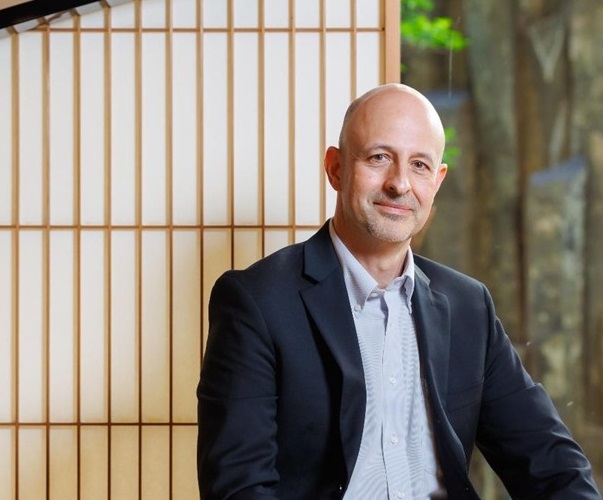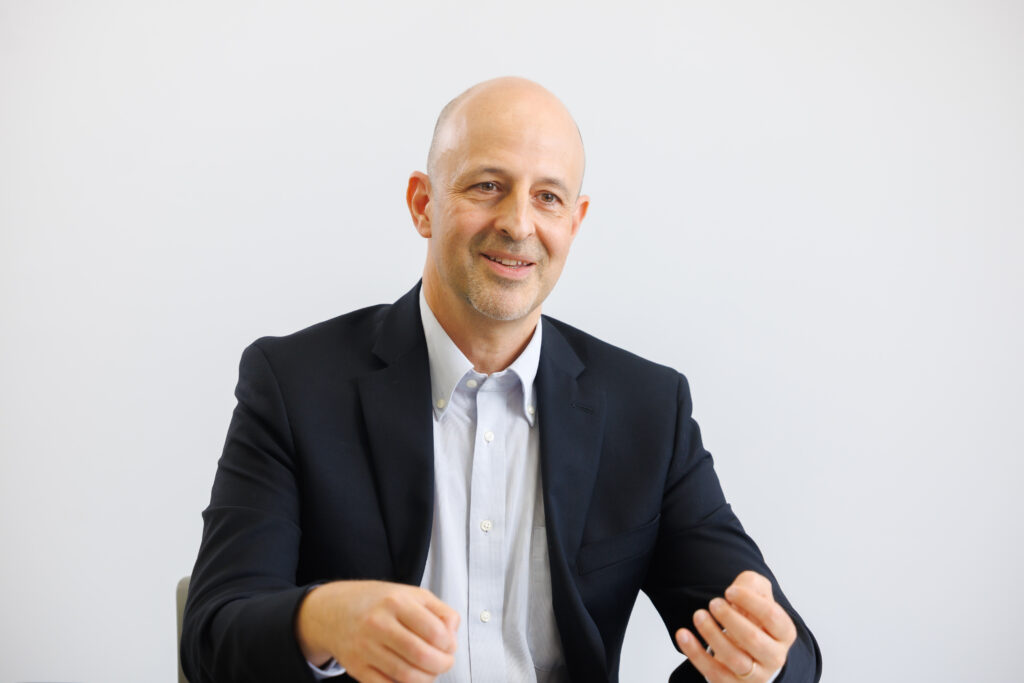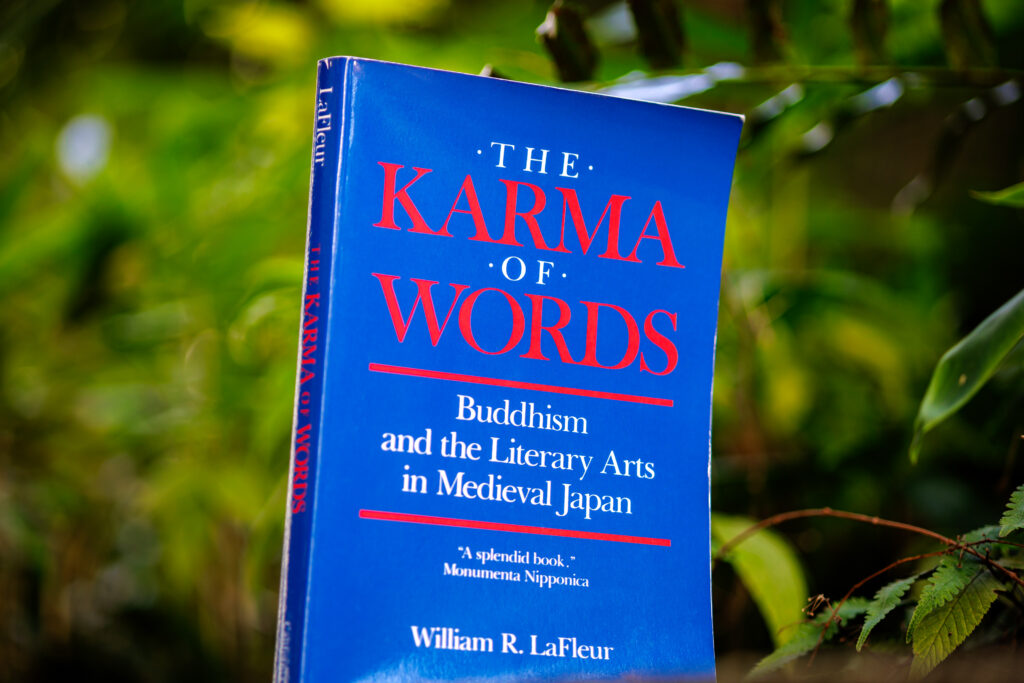
Associate Professor Edward Drott of the Faculty of Liberal Arts specializes in how Buddhist knowledge has influenced the understanding of the human body, particularly in premodern Japan.
My research involves the role of the human body in religion and how religion has influenced people’s understanding and knowledge of their bodies.
Why study religion and the body? To answer that, I should explain that I grew up in the United States where I encountered very specific ideas about what religion was, how it worked and what it was for. People tended to assume that religion was primarily a matter of faith and belief, in other words, religiosity was treated as a mental or intellectual disposition. So, when I first began to study Japanese Buddhism and Shinto, I was a bit surprised by what I found. Religion in Japan is much more practice-oriented. And often people engage in these practices without ever reflecting on questions of faith or belief.
People in Japan frequently engage in activities such as visiting temples or shrines, obtaining omamori (charms), engaging in seasonal festivals or celebrations like hatsumode (the traditional New Year’s Day shrine visit, where one makes wishes for the coming year), or holding Buddhist memorial rites for deceased family members. These are activities that many would describe as religious. However, people in Japan don’t seem to think so much about gods or any particular religious doctrines or ideologies when engaged in these practices. Though there are exceptions, in Japan, religion is often not deeply connected to the mind, intellect, or belief, but it is much more connected to the body and practice.
So this got me thinking about the role of the body in religion more broadly.
How Buddhism affected the understanding of the aging process

A major component of my research has been on how Buddhism affected understandings of the aging process in premodern Japan. I found that religious ideas and practices had a significant impact on how people felt about old age.
In early Japan, old age was commonly seen as a mark of negative distinction, representing ugliness, barrenness, and pollution. From the late Heian period (794-1185), however, certain Buddhist authors started to treat the aged body as a symbolic medium that could express the potential for salvation and awakening even in the midst of samsara—the world of impermanence and suffering. Around this time, we also see Buddhist authors crafting narratives featuring avatars of gods or buddhas who took the form of elders.
One thing I think my work shows is that there has never been one static meaning of old age. Old age is more than a mere fact of biology; its meanings, the way we think and talk about it, indeed, the way we experience it, have changed from time to time and place to place.
I have also studied “Buddhist medicine” in Japan mainly during the Heian (794-1185) and Kamakura (1192-1333) periods. I began looking at Buddhist medicine because ancient medical texts help us understand how old age was defined in the past. But Buddhist medicine turns out to be a rich and fascinating subject in its own right. Some of the most important medical texts of premodern Japan were composed by Buddhist priest doctors, who blended knowledge gleaned from Buddhist scriptures with traditional Chinese medical theories.
Impact of meditation on your brain
My research on religion and the body has also gotten me curious about the ways in which religious practice can have concrete effects on our physical being. For instance, I am curious about meditation and its effect on the brain and body. Of course, in recent decades, many scientists have come to study the effects of meditation on the brain. In the future, I hope to team up with some of these researchers.
One way the effects of meditation have been described by philosophers is in terms of learning and habit formation. For instance, we might compare meditative training to learning to play a musical instrument. Undergoing repetitive training on a musical instrument, such as a guitar, enables you to gradually internalize patterns of motion, and to play faster and more freely without having to consciously reflect on every single finger movement. This provides a model for understanding meditation and perhaps other forms of religious practice.
During Buddhist meditation people are essentially “practicing” to be a buddha, or practicing to “perform” buddhahood. The Buddhist tradition tells us that as an enlightened being, a buddha is able to sit in utter tranquility and gain a perfect awareness of their surroundings, allowing them to respond to any situation in an appropriate manner. I suspect that the more one meditates—the more one “practices” being calm, being aware—the more easily and instinctively one is able to return to these kinds of physiological and neurological states. The more you practice, the more you develop those skills.
But this is just one example of how religious practice can be seen to impact the body. My course on religion and the body lets students encounter these and other of the various ways in which people have tried to understand and transform the body through religious practice, sometimes in ways that we find positive and helpful and, it should be noted, sometimes in ways that we might find strange or problematic. More broadly, my courses on Buddhism and Japanese religion expose students to the ways in which people have sought to understand the world, the universe, and our place in it. They will also provide students with opportunities to ask big questions and reflect on who they are and what they want to do in the world. I think college is the ideal time for that.
The book I recommend
“The Karma of Words”
by William R. LaFleur, published by University of California Press

This is one of the first books that introduced me to Japanese religion. Before I encountered this book, I used to think about religion or philosophy as areas of life that are cordoned off from the rest of our everyday lives. But this book talks about how Buddhism was influential in medieval Japanese literature and how Buddhism shaped not only literary content, but also literary forms, and aesthetics—the sense of what makes a work of art beautiful or worthwhile. It was thus one of the first books that got me thinking about the subtle ways in which religious ideas might filter out into and influence a given culture.
-
Edward R. Drott
- Associate Professor
Department of Liberal Arts
Faculty of Liberal Arts
- Associate Professor
-
Edward Drott received his PhD in Religious Studies from the University of Pennsylvania in 2005. His research explores the role of the body in religion and the role of religious ideology and practice in producing knowledge about the body. After completing his PhD, he held a postdoctoral fellowship at Harvard University’s Reischauer Institute of Japanese Studies, served as lecturer at Dartmouth College, and as assistant professor at the University of Missouri.
- Department of Liberal Arts
Interviewed: October 2022